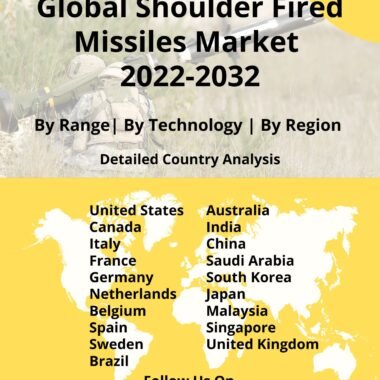Description
Drones are flying vehicles with a wide range of size and payload capacities ranging from a few grams to several kilograms. Over the last few years, the use of small drones to do various jobs has become more popular. At the same time, the threat posed by drones to society, public safety, and personal privacy is growing more acute. Drones allow an attacker to reach any target in any area without endangering troops, and they have an ever-expanding range of applications, ranging from weapon carriers to espionage instruments. Counter drone technology for detection, deterrent, and destruction of incoming drone threats must be developed and deployed to reduce and negate the impact of drones.
Counter drone (anti drone) technology, commonly referred to as counter-UAS or C-UAS, refers to devices that detect and/or intercept unmanned aircraft systems in flight. As drones become more widely used, counter-UAS technology is continuously developing and changing. Concerns about the threat that drones offer in civilian and military situations have fueled the advancement of C-UAS technology.
Using several sensors, a counter drone system can detect, track, and identify airborne drones, send the information to linked systems, and enable counter tactics to prevent them from carrying out their intended mission (soft kill) and/or destroy them (hard kill). Drone detection is accomplished using radars and an RF-based detecting technology. The Electro Optic sensor and COMINT are used to identify the object. Soft kills are carried out using RF jamming and anti-GNSS technologies, while hard kills are carried out using Laser Directed Energy Weapons (DEW).
Counter-UAS measures are classified into two categories. Drone detection is the first, followed by drone mitigation or interception. Drones, are detected using drone detection technologies including radar, RF sensors, and PTZ cameras. Drone detection will detect an intruding drone in the airspace if it flies within the protected border. Drone mitigation or interception works by disrupting drone flight either electronically or physically. Drone jammers, spoofers, nets, and security drones are examples of drone mitigation technology.
The most common technology for detecting drones are radar and RF detection. Radar and RF detection can be used to improve airspace security in a variety of situations, including urban and high-noise areas. The combination of RF and radar can be utilized to develop a multi-layered solution that provides users with enhanced coverage and protection. DJI’s AeroScope is one of the most popular drones detecting systems. It can be used in conjunction with other RF sensors and radars to increase coverage and security. Drone detection technology provides users with situational awareness, allowing them to make informed judgments and take legal action as needed. In comparison to interception technologies, which may or may not be legal, drone detection technology has the advantage of being legal.
To keep an eye out for drones and ultimately shoot them down, Indian border troops rely heavily on their eyesight. Smaller drones flying at a high altitude, on the other hand, may be difficult to detect and target. In response to drone concerns, the Border Security Forces (BSF) started a programme to scour a pool of 500 Indian enterprises for information on how to prevent drones from being utilized for narco-terrorism and attacks on critical infrastructure. The Defence Research and Development Organization (DRDO) claims that its D-4 drone technology can assist the Army in quickly detecting and destroying drones that constitute a security threat to the country. The DRDO’s Counter-Drone System was used for the Prime Minister’s Independence Day speech last year, as well as for VVIP protection at Republic Day parades in 2020 and 2021, however the technology is yet to be mass-produced.
Anti drone counter-attacks include detection, Soft Kill (jamming the drone’s communication lines), and Hard Kill (laser-based hard kill to destroy the drone) using indigenous drone technology. Armed Services and other internal security organizations have already seen the technology in action. The system can detect and jam micro drones from a distance of up to 3 kilometers, and utilize a laser to bring down a target from a distance of up to 1-2.5 kilometers, depending on the laser weapon’s wattage. It has a four-kilometer radar detection range, a two-kilometer jamming range, and a one-kilometer kill range. The system can detect and eliminate drone threats in real time. It is capable of detecting and destroying drones in the air.
Counter drone technology is already in use in a variety of military and commercial applications. C-UAS systems are used by the US military for base protection in other countries. The use of portable and mobile systems to protect ground units and convoys is also gaining popularity. Counter drone technology is already in use in civilian settings in a variety of ways. Airports, stadiums, jails, enterprises, and large events such as the Super Bowl have all deployed C-UAS for airspace protection in the United States. The deployment of drone countermeasures such as signal jammers is restricted in the United States to federal agencies such as the US Department of Defense, Department of Homeland Security, and Department of Justice. In the United States, drone detection countermeasures such as RF and radar are authorized. Because drone detection is allowed, it is a more viable and practical security solution. Drone detection is already being used in a number of contexts in the United States to improve airspace security and reduce drone hazards.




